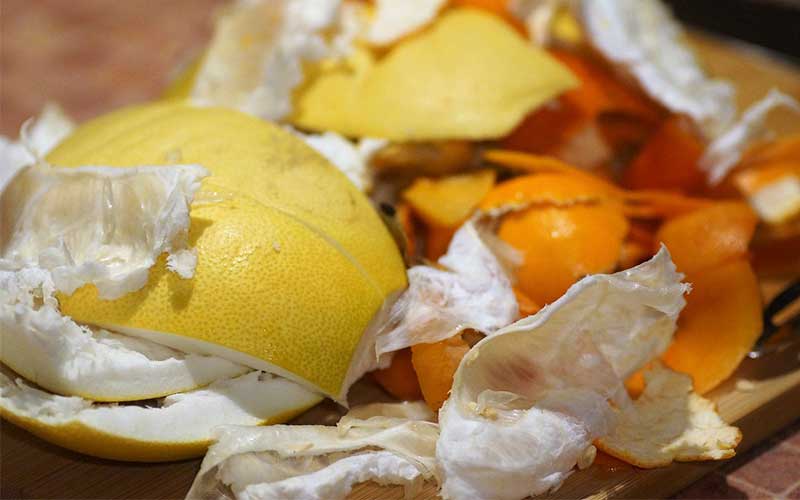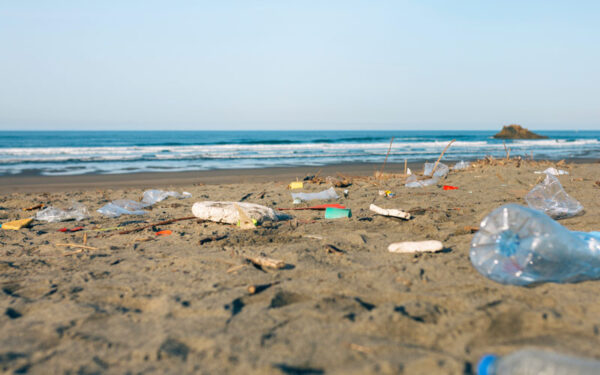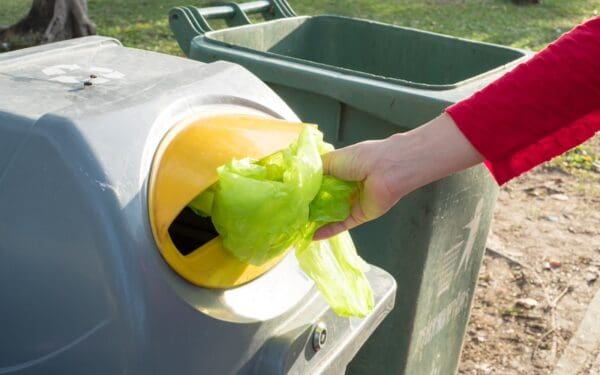
Combining food waste with sewage sludge is a false (and toxic) solution for recycling such a valuable resource. Photo Credit: ivabalk via Pixabay
When Cambridge, Massachusetts, partnered with a local composter to launch a curbside composting program in 2018, residents and environmental groups alike were excited. The program would not only recycle the City’s food scraps but keep a significant amount of food waste out of the state’s already maxed-out landfills.
But as more residents joined the program, the volume of food scraps increased. To accommodate the growth, Cambridge needed to find a new partner. It signed with Waste Management, Inc – a partnership that has since put the City’s food scraps to waste.
The thing is, Waste Management doesn’t compost food scraps at all.
Instead, the City’s food waste gets mixed in with the region’s sewage sludge. That mix is then processed, dried as fertilizer pellets, and sold to people and farmers to apply to their gardens or fields. The problem is that this combo of food waste and sewage sludge is toxic to human health.
While the pandemic has put the program on hold, it’s been lauded for having kept 1,800 tons of food waste out of the landfill. This is a great accomplishment, but it’s not enough. Now, before the program comes back online, Cambridge has an opportunity to seek out alternative partnerships that would make its composting program safe and sustainable.
Composting Keeps Food Waste Out of Landfills
Food waste is a valuable resource that can play a major role in restoring the health of our farmlands. It also sequesters huge amounts of carbon, making it a key tool for fighting the climate crisis. Yet, with U.S. households throwing away 32% of their food (an estimated $240 billion worth), this rich resource just gets wasted when buried in a landfill.
Landfills bury trash in “cells,” meaning that the food we throw away is not exposed to air, so it can’t decompose into soil like it would in a compost pile. Instead, it breaks down and emits methane – which contributes to the climate crisis.
As the issue of food waste has come under scrutiny in recent years, many have looked to composting as a solution – including Cambridge. But just like trash, where our food waste goes and how it’s processed is fundamental to the health and safety of our communities.
The key is to avoid mixing food waste with anything toxic to human health. This is where Cambridge’s program is flawed. Until the city can find a composting partner to handle its volume of food scraps, it’s stuck with the more expensive, unsustainable option that Waste Management provides.
Combining Food Waste with Sewage Is a Toxic Formula
Here’s a quick rundown of what is currently happening with Cambridge’s curbside food scraps:
- After the food waste is picked up at the curb, it goes to Waste Management’s facility in Charlestown, Massachusetts. (The City pays about $63 per ton of food scraps, which is a high fee as compared to the $35–45 a ton that composters usually charge).
- Liquid is then added to the food waste and is ground into a slurry.
- Next, the slurry is trucked 30 miles north to a wastewater treatment plant called the Greater Lawrence Sanitary District.
- Here, the slurry gets combined with the region’s sewage sludge – a by-product of wastewater treatment – in large, airless tanks called anaerobic digesters.
- The anaerobic digesters break down the remaining organic material to generate methane. Some of the methane is captured and burned to help fuel the power-hungry digestion process.
- Finally, the remaining food waste/sewage sludge mixture, or sludge, is dried into pellets and sold as fertilizer by Casella Waste to the public and farmers.
Sewage Sludge Is Dangerous
Here’s the big problem: sewage sludge is toxic.
Wastewater treatment plants don’t just collect water from our toilets and drains. They serve as collection points for polluted runoff from roads, parking lots, hospitals, and industrial and commercial sites that flow into the sewer. These facilities even receive millions of gallons of poisonous liquids leaching from landfills. While wastewater treatment plants “treat” – or detoxify – the polluted runoff and liquids from bacteria, they don’t filter out most of the chemicals coming from these sites.
Over a decade ago, the Environmental Protection Agency announced that sewage sludge contains thousands of chemicals. Why? Because little is done to prevent toxic materials from entering the sewer in the first place. Plus, the technology to fully detoxify the sludge doesn’t currently exist and isn’t required.
So, while some pollutants, including heavy metals like lead and copper, are reduced, some 80,000 other synthetic chemicals are not. That means after wastewater is “treated,” many of these dangerous pollutants flow right back into our water cycle, while the rest end up in sewage sludge.
So that food waste/sewage mixture that’s sold as fertilizer? It’s actually a toxic blend of thousands of chemicals – from flame retardants to pharmaceuticals to steroids – all of which are hazardous to humans and animals.
Cambridge (and Our Environment) Can’t Afford this False Solution to Food Waste
You can’t fault a treatment plant for not cleaning up poisonous substances when there’s no technology to remove them, and the law doesn’t require them to do so. But it is both alarming and dangerous that the Environmental Protection Agency allows the toxic food waste/sewage sludge mixture to be made into fertilizer or spread on farmers’ fields in the first place. Unfortunately, this is a very common practice.
Still, it doesn’t have to be this way. If the food scraps were processed in an anaerobic digester without being mixed with sewage sludge, the output – called digestate – could be used as fertilizer, safely. It’s not the process that’s the problem, but the sewage sludge (at least when it comes to mixing it with food waste).
Laura Orlando, a civil engineer who teaches at the Boston University School of Public Health, testified before the Cambridge City Council that, by combining our food scraps with sewage sludge, the city and state have invested millions to turn food scraps into a source of pollution.
Cambridge Could Lead New England’s Curbside Compost Revolution
Cambridge is a leader on Zero Waste issues in New England. It was one of the first Massachusetts cities to ban plastic bags, and its compost program – while flawed – is the first of its kind in the region. To date, 25,000 households – about half the city – have registered for its curbside service.
As the City is gearing up to bring its program back online, Cambridge has an opportunity to improve the service – and turn it back into a real composting program. The City can partner with composting businesses that have sustainable facilities to truly compost these rich, organic materials. And, it can help lead the charge for urban composting infrastructure, which could serve as a roadmap for safe and sustainable programs throughout New England.
The demand for curbside compost is rising. With sustainable curbside programs, we can remove food waste from landfills for good. But first, we must keep this rich organic resource away from toxic sewage so that we can safely nurture our farmlands for generations to come.




